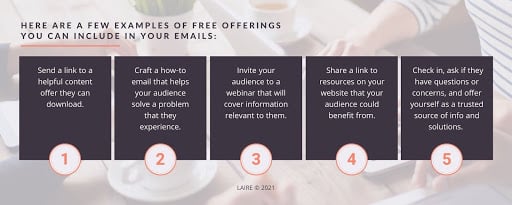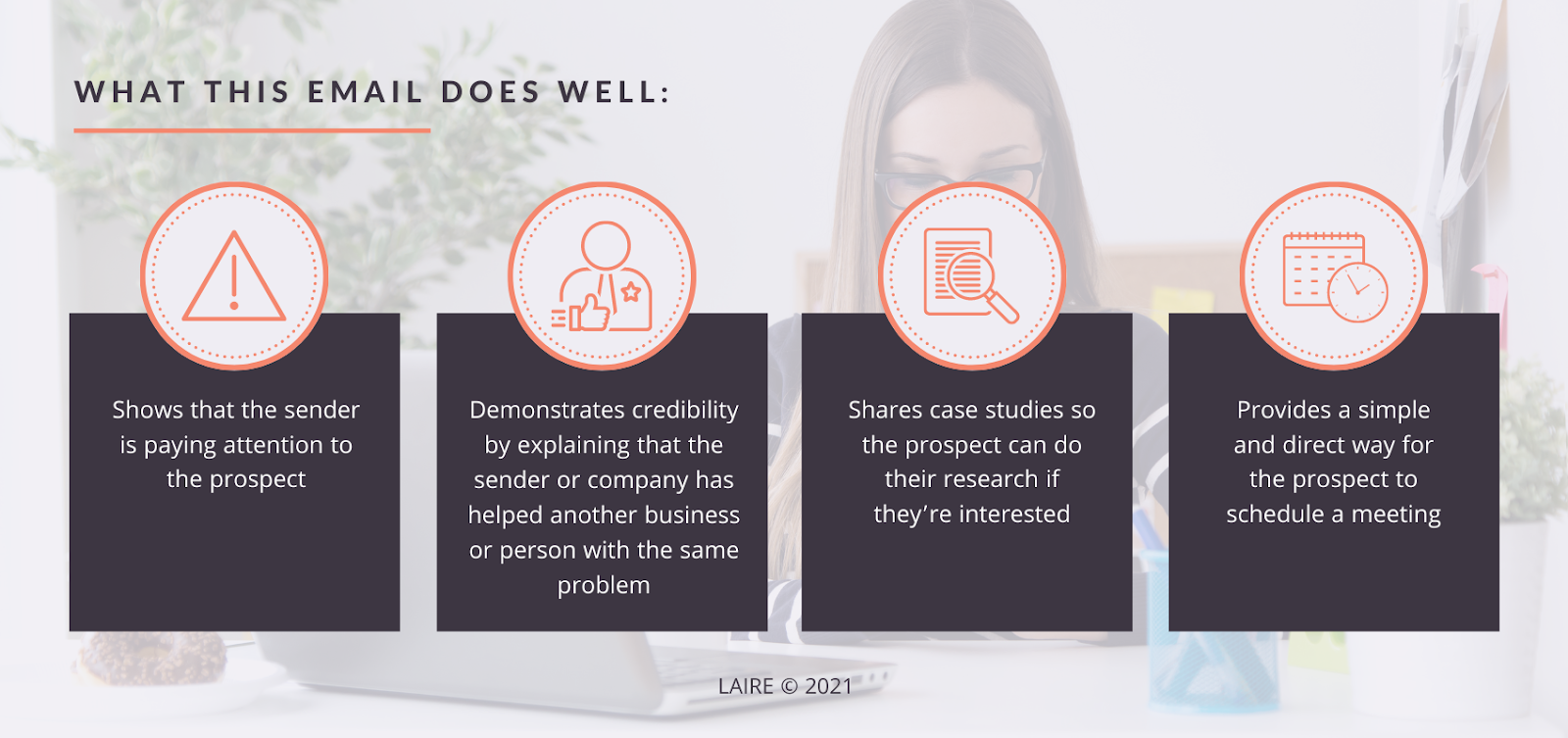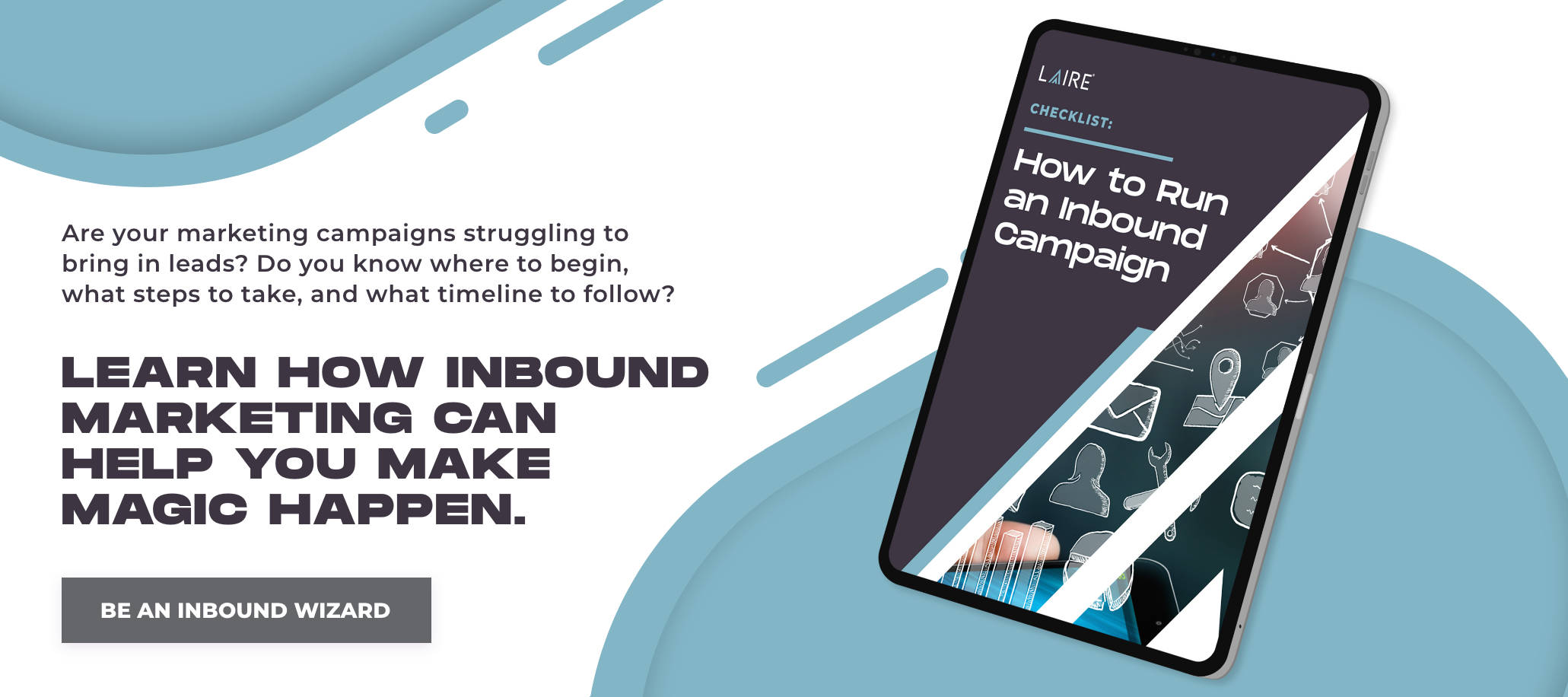Sales consists of psychology applied through strategy. Having a strong understanding of psychology in relation to consumers can help you better craft your sales emails to improve reception across the board. Buying behaviors are generally quite consistent, and by harnessing what influences buying decisions and directing it into powerful lead nurturing emails, you can turn more prospects into leads, ultimately generating more sales.
Psychological selling leans on what we know about social behaviors and decision-making processes as they relate to making purchases. Today, we’ll dive into the psychology of a sales email and what to consider when crafting emails for various stages of the buyer’s journey. From first impressions to understanding the purpose behind each aspect of an email, we'll sift through all of the psychology that goes into writing a well-crafted and impactful sales email.
First Impressions Count in a Sales Email
The first impression could be the last if it isn’t executed thoughtfully. The difference between a true conversation and a sales email is the entire lack of face-to-face interaction. If you’re selling a product or service in person, your audience is less likely to walk away while you’re talking if they don’t align with the information you’re presenting. Through email, if they feel the slightest bit misaligned with your messaging or annoyed by the frequency of which you send emails, they can easily unsubscribe from receiving further communications. This is the technological equivalent of slamming the door in a salesman’s face.
The key to making a good first impression is delivering the right message, to the right person, at the right time, and getting it right usually takes some testing and retesting. Segmentation of your contact lists can help this process become more successful. When you segment your contact list, you’re identifying contacts that would be better suited for a specific product or service based on their individual attributes. In a 2019 study done by Campaign Monitor, they found that marketers who use segmented campaigns have experienced as much as a 760% increase in revenue. Delivering the right message to the right person at the right time can be incredibly lucrative in the long run, so it’s important to nail the psychology of your buyer personas and craft impactful first impressions.

What you say and how you say it matters in any first impression. The best advice would be to put yourself in the place of the target audience. Read your messaging and think about how you would react or respond if you received the same message. Would you click the download link? Would you schedule a consultation? Is there a clear and direct next action? Does the content make you think of a problem you’re encountering currently? Signaling your interest through someone else's point of view is the practice of conversational receptiveness. When you craft a message that is clear, impactful, and direct, your prospect is far more likely to engage in your outreach efforts. By putting yourself in your prospect’s shoes, you'll be able to build stronger relationships, sooner.
Use Cognitive Biases To Help Craft Your Messages
What is cognitive bias? Cognitive bias seeks to describe when humans deviate from normal judgment and rationality through unintentionally creating their own subjective reality where they unintentionally process information with underlying biases. When you truly believe that your product or service will solve your customers' problems, using cognitive biases like the ones described below will help them believe in your solution.
Confirmation Bias
We are all more likely to appreciate information that supports our beliefs. You should take this into account in order to best personalize the messaging within each email a contact receives. According to HubSpot, message personalization is the number one tactic used by email marketers to improve performance. You want to zero in on your target audience’s pain points and emotional experience, using that information to craft emails that appeal to their problems while delivering your services or solutions.
Reciprocity
This technique is based on the concept that when someone gives us something, we usually feel obligated to give something back. Offering your email recipients something for free can make them feel obligated to give in return. Here are a few examples of free offerings you can include in your emails:

- Send an access link to a free downloadable content offer.
- Craft a how-to email that helps your audience solve a problem that they experience.
- Invite your audience to a webinar that will cover information relevant to them.
- Share a link to resources on your website that your audience could benefit from.
- If you are making a personal touch base, check in with your contact and ask if they have any questions or concerns they would like to address and offer yourself as a trusted source of information and solutions.
Social Proof
Humans are social beings. So we tend to lean towards things that other people already like. If your prospect is in the consideration stage, it could benefit them to see several reviews from other customers or clients you’ve worked with previously. People are keen to the opinions of others whether they want to admit it or not. Hence why Yelp has skyrocketed to become the number one review app on the marketplace. People love hearing other people’s experiences and will often scour reviews for products and services before making a decision. As a buyer, they want to make informed decisions, and a lot of the informing comes from those reviews.
Functional Fixation
As humans, we have a tendency to associate specific objects with a single function. With functional fixation in mind, psychological selling gives you the opportunity to showcase how your product or service can help your prospect in ways they might not have thought of prior. This is a perfect chance to highlight what makes your product or service unique.
FOMO (Fear of missing out or the fear of missing something)
The fear of “regretting” is often what pushes us to buy. Ever heard someone say ‘For a limited time only!’ or ‘Don’t Wait! Inventory is flying off the shelf!’ - this sense of urgency creates the fear of missing out. You can do this by providing examples of customer successes that are already profiting from your product and the progress they have made as a result.
Psychology Selling Techniques
Cognitive bias is the psychological groundwork that can help you overcome a prospect's unintentional natural objections. Remember that convincing a buyer to continue with a purchase that does not meet their needs will result in a negative experience that could impact the success of your future sales. You will quickly notice that it is quite an art to set up efficient sales processes through email. At the end of the day, a sales email is still considered marketing, so get with your marketing team to gain a deeper understanding of the buyer personas they are targeting and work together to craft messaging that speaks to each persona in each stage of their buying journey. Aligning sales and marketing teams on the email front can be the first step in preparing sales-focused emails that convert your prospects into leads.
How to Write a Sales Email
In an email, you have many areas to consider when crafting messages that convert. Think of each aspect of an email as an ingredient in a recipe. If you have the right ingredients in the right places, you’re setting your email up for success. The recipient will read the sender’s name first, then the subject line, followed by the email preview prior to opening the email. This is the first impression we spoke of earlier, so make it count. Once the recipient has opened the email, they will see the salutation, email body, closing, and signature. Be sure that all of these ingredients align with one another and the overall goal of the email. Below is a breakdown of each aspect of an email and the purpose it serves, along with some best practices.
Sender
The person or company that sent the message appears here. Almost every email platform displays the person’s name before their email address to make it easier to identify who is sending the email. Your inbox, prior to opening a new email, will just display the name first, so be mindful of the name that is associated with the email you are sending from. Many emails are sent from email addresses such as ‘info@company.com’ but the name associated with the email is typically the company name or someone important from the company. It’s best practice to make sure the name associated with the email address is recognizable to the audience receiving the message. If you want your email to appear more personalized, be sure to include the name of a trusted and recognizable source within your company as the sender.
Subject Line
What is your email about? A rock-solid subject line should summarize the email and make it stand out enough for the reader to want to open. Make sure your subject line is relevant to the contents of your email and catchy so your audience is more inclined to open. In most email platforms, after your subject line is an email preview. Your email preview gives your audience a taste of what is within, so be sure to make the preview stand out and differ from the subject line. Many email platforms allow for contact personalization such as including the recipient’s first name, company name, and many other contact designations. Many ask how long their subject should be, and based on recent email marketing statistics collected by HubSpot, most email subject lines average out to 44 characters. If you really want your subject line to stand out, try using personalization to catch your reader’s attention.
Salutation
After your subject line, your email salutation, or greeting, is the first part that your intended recipients will see in their inbox. The greeting should match the tone you aim to set in the rest of your email and should be encompassing of everyone who receives your email, so make sure to keep your greeting respectful and relevant to the purpose of the message being sent. As mentioned above, the same personalization can be added to the salutation portion of the email and is encouraged if you’re wanting your outreach to be more personalized and less generalized. Making someone think the message is intended for them will make them feel considered and they will be far more likely to make it to the end of the message being sent.
Email Body
The email body contains the carefully crafted message we’ve been mentioning above. Effective emails bodies are typically shorter, tailored to the audience, contain a direct next action (link click, download, etc), and are written carefully and powerfully enough to have the audience take the next step. Use the psychology best practices above to craft an effective email body that will convert.
Closing
The closing of an email is the portion directly above the signature and is just as important as the greeting, if not more. The closing you choose should match the tone of the rest of the email, like the greeting, and should close out the email respectfully and relevantly. You aren’t likely to put ‘Peace Out,’ as your closing, but a company like Peace Tea would be inclined to put a closing like this in their marketing emails as a nod to their branding. Make sure your closing aligns with the audience intended for your messaging and also aligns with your company and the purpose of the email.
Signature
Standard emails may sign off with just the sender’s name. If you aren’t wanting to include the name of a single person, the signature of your email can include the company name, email, phone number, and even the company logo. These kinds of signatures are helpful when reaching out to your audience as it gives them a direct line of support and creates brand awareness through placing the company name and logo at the end of the message.
Free Sales Email Template
Below we have provided an example of a carefully and thoughtfully crafted sales-focused marketing email that puts the psychology above into play.
Dear [NAME],
Because I work so much within the [INDUSTRY NAME] industry, I constantly follow industry news. Recently I noticed that you’ve [COMPANY ACCOMPLISHMENT]. Congratulations!
Usually when that happens, [BUSINESS ISSUE] becomes a priority. That’s why I thought you might be interested in finding out how we helped [WELL-KNOWN COMPANY OR COMPETITOR] get going quickly in their new direction – without any of the typical cookie-cutter approaches to marketing.
Check out our previous campaigns here - [LINK TO RELEVANT CASE STUDY].
If you’d like to learn more, let’s set up a quick call. Schedule 15 minutes here on my calendar - [Meetings Tool link].
Regards,
[NAME]
[COMPANY NAME]
[CONTACT INFORMATION]

What this email does well:
- Shows that the sender is paying attention to the prospect
- Demonstrates credibility by explaining that the sender or company has helped another business or person with the same problem
- Shares case studies so the prospect can do their research if they’re interested
- Provides a simple and direct way for the prospect to schedule a meeting
A great way to understand the impact of various messaging on your audience is to A/B test or split test your emails. The terms are used interchangeably to describe creating and sending multiple versions of the same message to test the effectiveness of each. A study conducted by Litmus concluded that companies who A/B test every email see email marketing returns that are 37% higher than those of brands that never include A/B tests.
Key Takeaways
Psychological selling is an incredibly important concept, that when applied properly, can lead to conversions. Understanding how your audience will think, feel, and respond when receiving a message is the key to crafting impactful and actionable emails. Through the cognitive biases listed above, you can see the underlying psychology behind a person’s unintentional behaviors. This insight is powerful in telling you how someone may feel based on an action, while that very person may not even be aware they are feeling something or making a decision as it relates to their previous experiences.
Conclusion
Sales enablement seeks to converge sales and marketing for the purpose of generating revenue. This is an incredibly lucrative avenue to explore when working through multi-level marketing campaigns that include multiple touch bases, offers, and lead nurturing strategies. Sales enablement shouldn't fall on one person's shoulders. It's a constant initiative between sales and marketing teams to craft the most impactful messaging time and time again. Speaking of teams, our team is happy to help if you need it.


